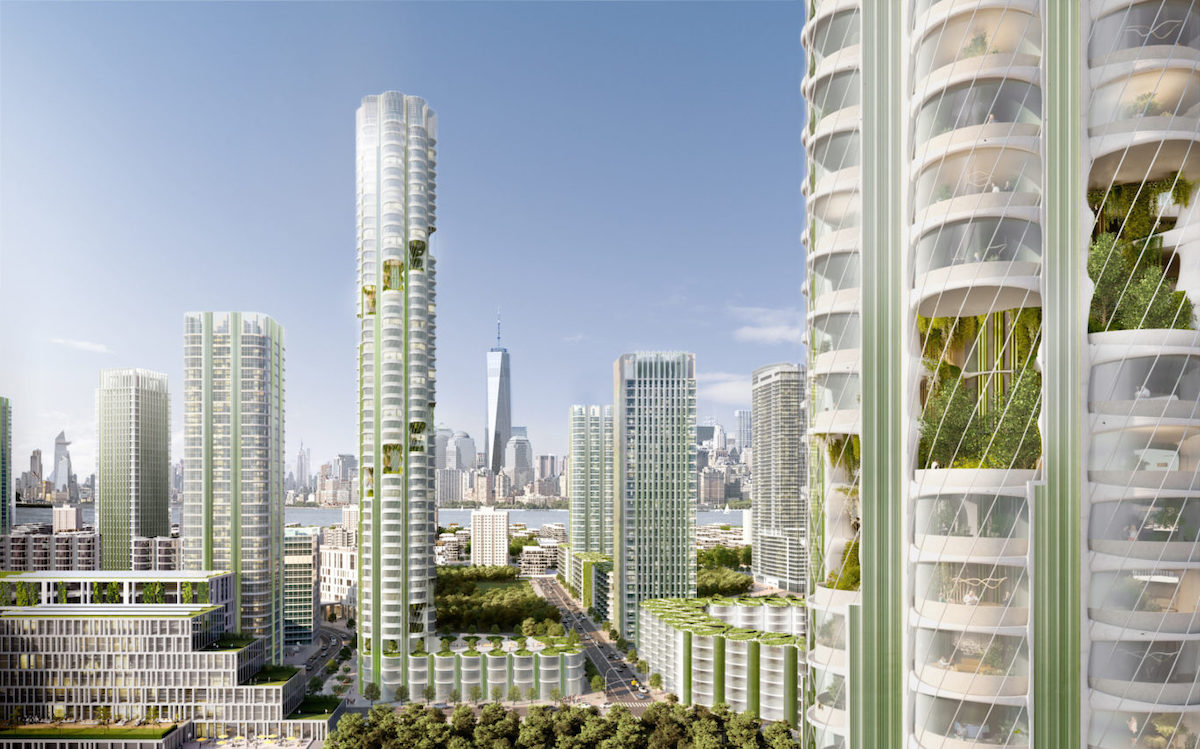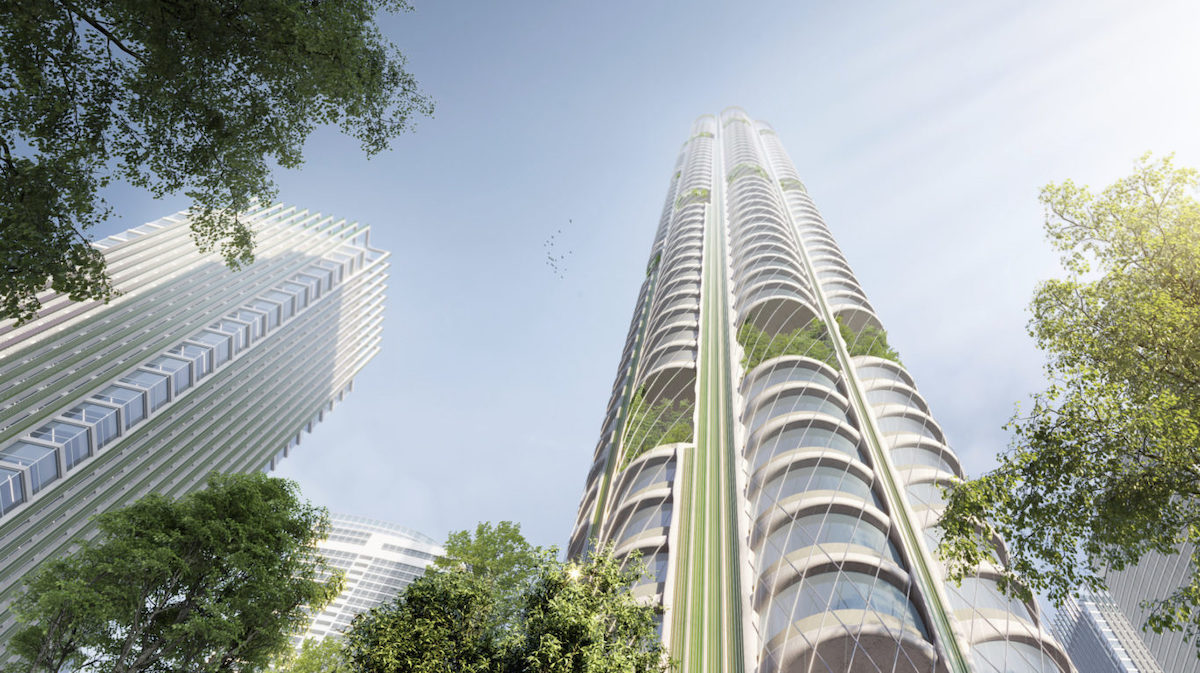For the past couple weeks, world leaders have gathered at the UN’s COP26 conference in Glasgow to establish ambitious new targets for cutting carbon emissions as the climate crisis intensifies. While many of the discussions involve finding alternatives for burning fossil fuels, little attention has been paid toward architecture and the built environment. Considering rampant urbanization and how the building sector currently generates 40 percent of carbon emissions, architectural innovations shouldn’t be overlooked.
One major idea comes from SOM, which unveiled a high-rise building typology that absorbs more carbon emissions than it creates. Called Urban Sequoia, the conceptual net-zero structure employs carbon-storing materials such as bio-brick, hempcrete, timber, and bio-crete that reduce the carbon impact of construction. Taking cues from rooftop gardens, the building’s facade and “gray” surfaces can be covered with biomass and algae, which captures up to 1,000 tons of carbon per year, the equivalent of 48,500 trees. This can be converted into biofuel that can power heating systems, vehicles, and industrial processes, effectively creating a “carbon-removal economy.”

